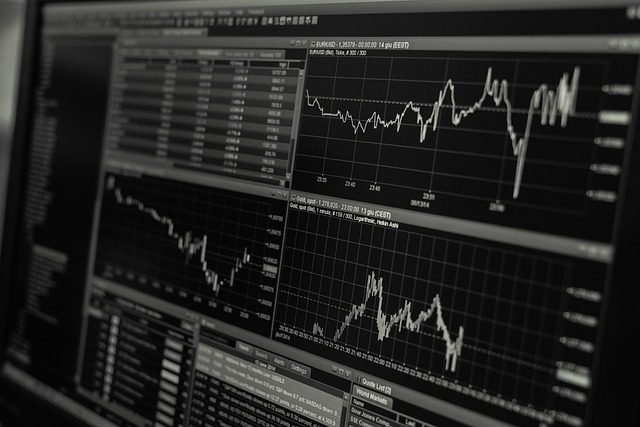Introduction: Nifty vs Sensex
India’s stock market is gaining global recognition. Its two largest indices, Nifty and Sensex, are attracting both local and international investors. As we head into 2025, a key question arises: which index is better for investors who want to maximize returns, manage risk, and stay diversified?
This blog will compare Nifty and Sensex based on performance, sector exposure, volatility, and investment strategies. This comparison will help you make an informed decision. Whether you’re a beginner or an experienced investor, this guide will help you understand which index aligns with your investment objectives.
What Is Nifty vs Sensex 2025? Understanding the Basics
Before diving into comparisons, let’s clarify what these indices represent.
Nifty 50 is a benchmark index of the National Stock Exchange (NSE). It represents the top 50 listed companies by market cap across 14 sectors, including major players like Reliance Industries, Infosys, TCS, and HDFC Bank.
Sensex (BSE 30), managed by the Bombay Stock Exchange (BSE), tracks 30 large-cap companies. While it includes some of the same heavyweights, the composition differs slightly.
Key Differences at a Glance
- Nifty: Broader, includes 50 companies
- Sensex: Narrower, includes 30 companies
Nifty vs Sensex 2025: Both are weighted by market cap but differ in composition and sector exposure.

Nifty vs Sensex: Historical Performance Analysis
Over the past decade, both indices have shown notable growth. But which one will perform better in 2025?
- Nifty CAGR (2013–2023): ~12.5%
- Sensex CAGR (2013–2023): ~11.9%
In 2024, Nifty outperformed Sensex due to rallies in the tech sector. As we enter 2025, global macroeconomic conditions, inflation, and foreign investments are influencing both indices.
Performance Metrics (2024–2025)
| Index | YTD Growth 2025 | 5-Year CAGR | Major Drivers |
|---|---|---|---|
| Nifty | +14.6% | 12.8% | IT, Energy, FMCG |
| Sensex | +12.2% | 11.6% | Finance, Pharma, Auto |
If you are comparing Nifty vs Sensex 2025 solely based on historical growth and sector trends, Nifty has a slight advantage.
Sector Composition: Nifty vs Sensex 2025 – What’s Inside?
Nifty Sector Breakdown:
- Financial Services – 36%
- IT – 15%
- Oil & Gas – 12%
- FMCG – 8%
Sensex Sector Breakdown:
- Financial Services – 41%
- IT – 13%
- Healthcare – 7%
- Automobile – 10%
Nifty vs Sensex 2025 – Which Sector Portfolio Fits Your Goals?
If you are optimistic about IT and energy, Nifty provides higher exposure. If you prefer finance-heavy exposure with dominance in auto and pharma, Sensex may be the better choice.
Volatility Comparison: Which Index Is More Stable?
Volatility is an important factor for savvy investors.
- Nifty’s Average Annual Volatility (5-year): 14.3%
- Sensex’s Average Annual Volatility (5-year): 13.8%
In the Nifty vs Sensex 2025 comparison, Sensex is slightly more stable due to its narrower base. However, Nifty’s broader exposure allows for better diversification.
Global Investor Perspective: Accessibility & Liquidity
For international investors, both indices are accessible through ETFs or mutual funds. Global products such as:
- iShares India (tracks Nifty)
- SPDR S&P BSE Sensex ETF (tracks Sensex)
Have higher liquidity in Nifty-based products due to greater institutional participation.
Rebalancing Frequency and Impact
Nifty is rebalanced twice a year, while Sensex is rebalanced quarterly. This affects:
- Portfolio freshness
- Sector relevance
- Responsiveness to market changes
Investors comparing Nifty vs Sensex 2025 may prefer Nifty’s slower rebalancing for long-term holding, while active traders might favor Sensex.

Investment Options for Nifty vs Sensex 2025
How to Invest in Nifty vs Sensex 2025?
You can invest in either index through:
- Index Mutual Funds (low cost, diversified)
- Exchange-Traded Funds (ETFs)
- Index Futures/Options for experienced traders
Nifty vs Sensex 2025: Which One Suits Your Risk Profile?
- Conservative Investors: Sensex (less volatile)
- Growth-Oriented Investors: Nifty (tech-heavy and diversified)
- Global Investors: Prefer Nifty for broader exposure
Why Smart Investors Prefer Nifty vs Sensex 2025
As global diversification becomes more common, many investors are leaning toward Nifty in 2025. However, this does not mean Sensex is behind; it remains a solid choice for value investors.
Final Verdict: Nifty vs Sensex 2025 – What’s the Best Bet?
There is no one-size-fits-all answer. Here’s a summary:
| Criteria | Nifty | Sensex |
|---|---|---|
| Company Count | 50 | 30 |
| Sector Coverage | Broader | Narrower |
| Volatility | Slightly Higher | Slightly Lower |
| Global Accessibility | High | Moderate |
| Growth Potential 2025 | Higher | Stable |
If you’re building a future-ready portfolio, the Nifty vs Sensex 2025 comparison suggests Nifty has a slight edge due to its broader sector play and higher global investor participation.
Expert Opinions: Analysts on Nifty vs Sensex 2025
Market analysts have discussed the Nifty vs Sensex 2025 debate. Most agree that while both indices are fundamentally strong, Nifty tends to outperform during bullish trends because of its diverse tech exposure and broader sector base. Some analysts even argue that international funds prefer Nifty-linked instruments due to their alignment with global tech and energy trends.
Additionally, financial advisors recommend allocating portions of your portfolio to both indices to balance volatility. This approach allows investors to benefit from the Sensex’s stability and Nifty’s momentum.
Market Outlook for Nifty vs Sensex 2025 and Beyond
Looking ahead beyond 2025, economic reforms, digital transformation, and foreign investment are expected to favor indices with broader exposure. Nifty, being more responsive to market changes, may lead to long-term returns. However, policy changes and geopolitical factors could also boost performance for Sensex’s more traditional sectors.
Emerging industries such as electric vehicles, green energy, and AI are increasingly represented in Nifty’s top holdings, suggesting growth potential that surpasses traditional indices.
Tips for First-Time Global Investors
If you are new to investing in Indian indices and comparing Nifty vs Sensex 2025, start by learning about market mechanisms through index mutual funds or low-cost ETFs. Use platforms that facilitate global transactions and analyze past index cycles for insights.
Set realistic goals, monitor market movements regularly, and consider diversifying across both indices if you are uncertain. Remember, successful investing is about remaining invested over time, not timing the market.
Strategic Portfolio Allocation in 2025
Given recent trends, strategic allocation is becoming the preferred choice for many smart investors evaluating Nifty vs Sensex 2025. Rather than choosing one, several experienced investors opt for a blended portfolio—investing 60% in Nifty-based instruments and 40% in Sensex-based products. This strategy balances the growth potential of Nifty with the steady fundamentals of Sensex. It also helps manage sector-specific risks by leveraging strengths from both indices.
Furthermore, sector rotation strategies—where investors shift focus among sectors such as IT, FMCG, and finance based on market cycles—can be more effectively implemented using Nifty’s broader base. Meanwhile, Sensex’s limited but high-performing sectors offer a consistent and defensive strategy for capital preservation.
Real-World Case Study: How Investors Benefited from Diversification
Consider Arjun, a global investor from Singapore who entered Indian markets in 2022. He initially focused solely on the Sensex and enjoyed steady returns. However, in 2024, he branched out into Nifty-based ETFs and experienced higher annual growth due to investments in energy and IT. His strategy for Nifty vs Sensex 2025 included a balanced allocation, biannual rebalancing, and sector trend analysis.
This example shows how diversifying between Nifty and Sensex can enhance returns while lowering risk. It demonstrates that, when used wisely, both indices can effectively complement each other.
Educational Resources for Index-Based Investing
Whether you are a seasoned trader or a first-time investor, increasing your knowledge about index investing is crucial. In 2025, many smart investors are turning to global platforms like Morningstar, MSCI reports, NSE/BSE publications, and YouTube financial analysts to better understand Nifty vs Sensex 2025 trends. These resources offer real-time information, tested strategies, and insights on macroeconomic factors.
Joining investor communities or forums like Reddit’s r/IndiaInvestments, Twitter spaces, or financial LinkedIn groups can also keep you informed about global perspectives on Indian indices.

Future-Ready Strategies for Index Investors
As we move further into an era shaped by automation, artificial intelligence, and digital economies, the approach to index investing should advance as well. Investors reviewing Nifty vs Sensex 2025 should consider not only past returns and current sector allocations but also future readiness. Nifty’s greater focus on IT and renewable energy aligns well with global sustainability and tech adoption trends.
Additionally, geopolitical changes, shifts in global trade agreements, and measures to control inflation will influence the two indices differently. Nifty may respond more dynamically to tech-related international trends, while Sensex could maintain stability during economic downturns due to its reliance on traditional domestic sectors like finance and pharmaceuticals.
Investors should also explore hybrid investment options that track both indices or use algorithmic trading tools to adjust exposure based on macro signals. As India becomes more integrated with global financial markets, these strategies will be crucial for maximizing returns.
Conclusion
For informed investors in 2025, both Nifty and Sensex have solid potential. If you seek growth, sector diversity, and higher liquidity, Nifty has a slight advantage. If you value consistency, lower volatility, and a strong financial sector, the Sensex remains a reliable choice.
Use this comparison as a guide, but always evaluate your risk tolerance, objectives, and market outlook to ensure a personalized approach.
Happy investing!
Explore more through these valuable resources:
Learn the fundamentals of Nifty 50 and Sensex from their official indices. Deepen your investment knowledge with platforms like NSE India, BSE India, and ETF providers such as iShares India 50 ETF, SPDR S&P BSE Sensex ETF, SBI Mutual Fund, and Nippon India Mutual Fund. For global investing tools, check Interactive Brokers, Groww, Zerodha, and technical insights on TradingView.
Read expert views from Bloomberg and Moneycontrol. Access research content from Morningstar, MSCI, and NSE Publications. Join investor communities like Reddit’s r/IndiaInvestments, LinkedIn Groups, and Twitter Spaces for networking. Also, check out related blogs on Investment Strategies in the Stock Market, Smart Investment Strategies in the Stock Market: Build Wealth Wisely, and Sector-wise Stock Market Analysis 2025 on Globe Finance Hub for more insights.

Pingback: Apple AI Update 2025: 6 Inspiring Global Tech Trends Triggered